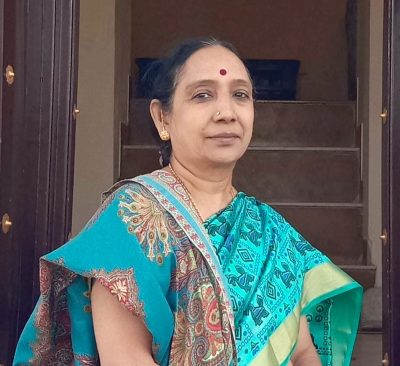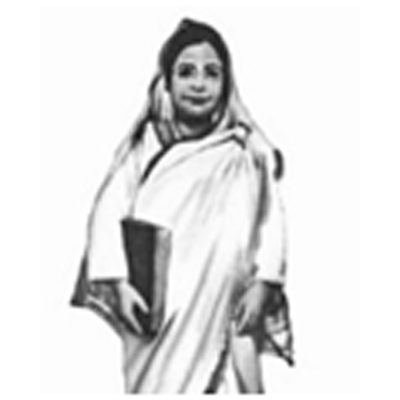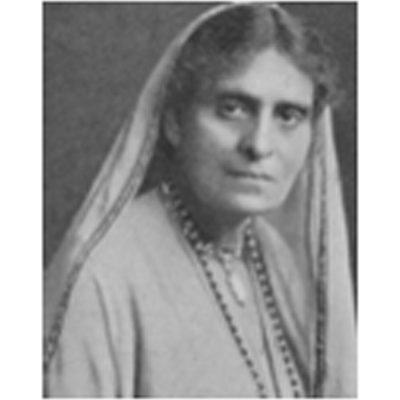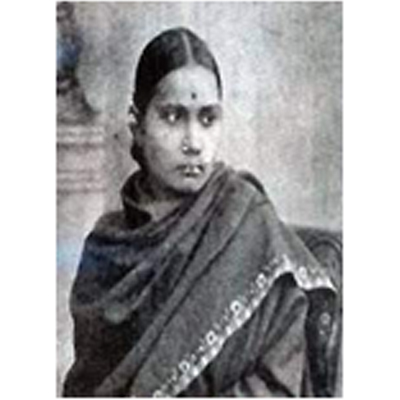
Breaking the Mould: Women’s Voices and Visions in Literature-3
(A Brief study of Indian women writers, contributed for the upliftment of women from social norms)
-Padmavathi Neelamraju
 |
Begam Rokeya Shekhawat Hussain (1880-1932)
“A world where men are confined to the murdana and women have taken over the affairs of the country,” lines taken from Sultana’s Dream, 1905. This courageous feminist writer and activist who worked all her life to remove what she called the “purdah of ignorance,” was born in Pairaband, a village, now in Bangladesh. |
Rokeya was married when she was eighteen to Syed Sakhawat Hossain, a widower who was then a district magistrate in Bihar.
Sakhawat Hossain believed that women’s education was the best cure for the evils that plagued the society. He encouraged Rokeya to write. Enthused by his young wife’s interest in women’s education, he set aside ten thousand rupees from his savings to start a school for Muslim women.When he died in 1909, just eleven years after they had been married, Rokeya started the school in Bhagalpur in his memory.
Writing from Bangladesh where Rokeya has received more recognition than she has in India, she questioned women, “If men want their wealth displayed, do it in the manner I have suggested. But why display their wealth on your body?” she openly suggested women to use the ornaments given by husbands in decorating their window curtains or pet dogs or their horses when they would go on a ride. This kind of opinionated writings were like jolts to the rooted social norms of Indian family whether it was Hindu or Muslim. She strongly believed that by ornamenting a woman’s body was like a total subjugation of self to man at home, which was not less than slavery.
Rokeya’s writings have a typically witty and imaginative. In Avarodbhasini (Secluded Women), a series of articles published in the Muhamadhi between 1928 and 1930, she presents a sequence of predicaments, that had been imposed on women pathetically as a result of purdah system prevailing . Many of these essays in two volumes of Motichur, 1905 and 1921, and in Pipasa (Thirst), 1922, were similarly anecdotal and argued a case, citing incident after incident vividly and humorously described. Rokeya also wrote one novel, Padmaraga (Ruby), in Bengali. “Sultana’s Dream” was first written in English and then translated by the author into Bengali. In her witty utopian fantasy, “Sultana’s Dream,” 1905, probably the first such work in Indian literature, Rokeya Sakhawat Hossain describes “a world where men are confined to the murdana and women have taken over the affairs of the country.”
 |
CORNELIA SORABJI (1866-1954)
“Although she supported traditional Indian life and culture, Sorabji promoted reform of Hindu laws regarding child marriage and Sati by widows. She believed that the true impetus behind social change was education and that until the majority of illiterate women had access to it, the suffrage movement would be a failure.” |
Cornelia Sorabji was born on 15 November 1866 in Nashik, in the Bombay Presidency, British India. She was one of ten children. When women had no access for higher education, Sorabji had been a key figure in convincing Bombay University to admit women to its degree programmes. Her mother, Francina Ford, was a great support to her to establish several girls’ schools in Poona (now Pune).
In 1894, Sorabji became involved in social and advisory work on behalf of the purdahnashins, women who were forbidden to communicate with the outside world. She found, many cases of women owning considerable property, yet had no access to the necessary legal expertise to defend it. Sorabji was given special permission to enter pleas on their behalf before British agents of Kathiawar and Indore princi -palities, but she could not further defend them in court since, as a woman, due to the Indian legal system of that time, she had no hold in professional standing.
Gradually, Sorabjiwas appointed Lady Assistant to the Court of Wards of Bengal in 1907, due to the need for such representation. In the next 20 years of her service, Sorabji rendered legal service at no charge to nearly over 600 women and orphans to fight legal battles.
She was associated with the Bengal branch of the National Council of Women in India, the Federation of University Women, and the Bengal League of Social Service for Women. For her services to the Indian nation, she was awarded the Kaisar-i-Hind Gold Medal in 1909.
Historian Geraldine Forbes argued that Sorabji’s opposition to nationalism and feminism has “caused historians to neglect the role she played in giving credibility to the British critique of those educated women who were now part of the political landscape.”
 |
BandaruAcchamamba (1874-1904)
Bandaru Acchamamba, the first feminist historian in India, begins her book on great women in India by quoting a verse in Sanskrit: “It is not the women imprisoned at home By men who hold them dear who are protected. Only those women are truly safe Who protect their own souls” |
Her book Abala Saccharitra Ratnamala (A Garland of Great Women’s Life Histories) was published in 1901, but was published as a serial earlier by the social reformer Kandukuri Veereshalingam in his journal, Chintamani. Abala Saccharitra Ratnamala was a magnum opus published in three volumes. Initially her objectives in attempting this work was to research and write about the lives of great women in India; in the next, about the women in the Vedas and the great epics; in the third part, about the lives of great women in other countries, unfortunately she couldnot live to complete it. In this herculean task she wanted to demonstrate that women are naturally possessed of dignity and a sharp intellect, and that the attempt was made to characterize women as inferior or cowardly due to male prejudice.
Secondly, she tried to prove that women would gain benefits through education which were denied by the society. Thirdly, she wanted to institutionalise the sisterhood of women, a major source of information that could be used in their speeches and talks. So Acchamamba’s clear analysis of women’s issues and her own polemical engagement became popular among the major debates of her time. Acchamamba was a prolific writer of essays, stories, and poems, published in leading journals such as Hindu Sundari and Saraswati. Acchamamba intensively travelled all over India, collecting material for her books.
Acchamamba was born in 1874, in a village called Nandigama. Like any other woman of that period Acchamamba had no schooling, whatever she had acquired through her own enthusiastic efforts, made her expert in Indian vernaculars like Telugu, Hindi, Sanskrit, Marathi & Bengali. The suffering she had undergone in her personal life i.e loss of her father, later husband and sons became a driving force for her to obtain education and scholarship in Indian languages.
Right through her brief adult life, she played a crucial role in building up a women’s movement. She started the Brindavan Stree Samajam, the first women’s Association in Machilipatnam in Andhra Pradesh, with another social activist Oruganti Sundari Ratnamamba in 1902. In 1903, she travelled all over the state, setting up similar women’s organizations. Acchamamba provided shelter to women who needed it, and there were always four or five orphaned children living in her house and going to school.
Acchamamba retold the story of Khana, the brilliant wife of the famous astronomer Mihira (some of whose calculations have not, to this day, been surpassed). Acchamambagathered fine information from various sources and on an account of the life of this distinguished couple in which Khana’s scholarship and her work as an astronomer were given a new significance. Acchamamba also hailed the contemporary feminists like Ramabai, Hardevi, Kashibai Kanitkar, Kamala Sattianadan, and those concerned with the relationship between knowledge and power in her magnum opus. She felt sad that popular knowledge held by the dark-skinned indigenous people was not only delegitimized and but forgotten over time.
*****
(Next, to be continued with some more contemporary women writers of the West from the same period. See you again!)

Padmavathi Neelamraju is a retired teacher with more than 35 years of experience in teaching English, based in Chandigarh. She completed her education at Nagarjuna University, AP and CIEFL, Hyderabad, and went on to receive an MPhil in Indian Writings in English with a focus on Feminist literature. With an interest in Telugu and English literature, she pens her experiences through blogs and newspapers. Her writings often reflect her enthusiastic and experiential outlook towards life and society. She actively volunteers for the cause of education.
